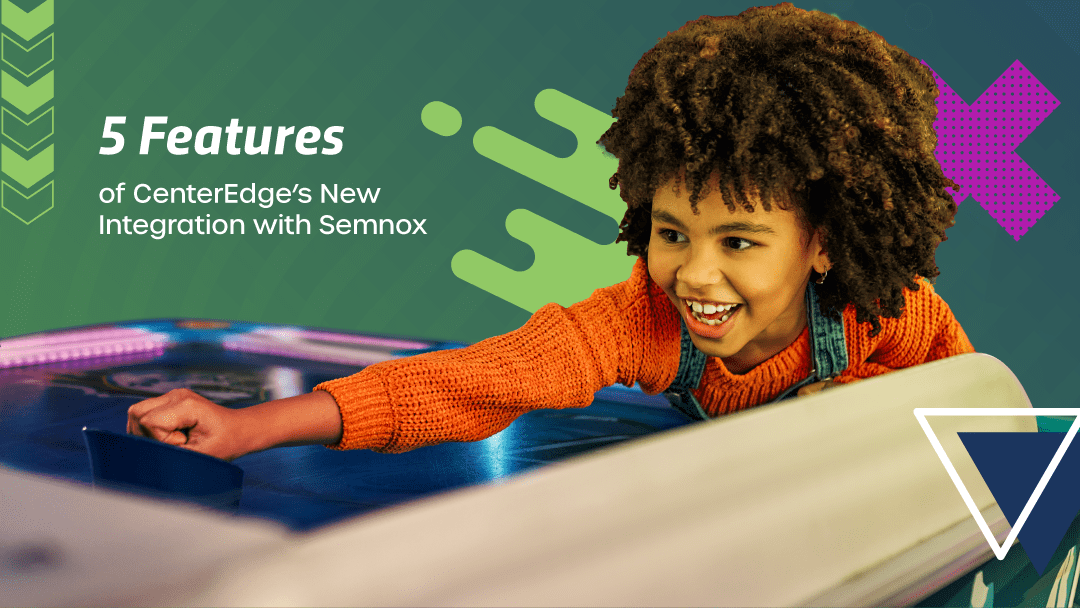Food service is one area that can significantly impact your business’ reputation and it’s no secret that everyone’s a critic these days.
It’s essential that FECs and amusement parks pay as much attention in their food service operation as they do in selecting the right attractions and maintaining them. In the past, some entertainment venues made do with a limited concession menu or outsourced food just for special events. Today, many facilities are considering fast casual or even full-service food and beverage as a major part of their operation.
The more sophisticated your food service, the harder it is to maintain a streamlined operation without the right tools. Automation becomes the key to maximizing speed, prep efficiency and output accuracy. A major way that small and large operations alike can achieve the right balance is using kitchen display systems. Kitchen Display Systems (KDS) connect your kitchen operations with your point of sale by displaying orders on screens when entered at the time of the sale, often replacing the need for kitchen printers or handwritten orders. Here are just a few of the ways a KDS system can be the right ingredient to maximizing your operation.
Streamlined order prep by station
It’s a no-brainer that replacing a handwritten order process can eliminate human error and inefficiencies such as incorrectly written order, missed delivery or even illegible handwriting. Simply setting your orders to be sent to KDS (or kitchen printers) from the point of sale immediately after they are placed shaves off valuable moments. And with either system, you can maximize your prep station efficiency to set menu items to automatically print or appear at specific station displays, such as burger orders going to grill line displays, pizza orders going to another station and cocktail orders printing at a bar printer to be made and picked up by a server. Team members simply bump the orders from one to the next and then complete orders are assembled and delivered by servers, counter staff or expeditors.
Easier order fulfillment
While using kitchen printers is a great start to increased efficiency, a KDS can provide you with even better transaction speed and accuracy controls. In addition to order routing to different stations, order alerts can be set up to notify staff that a new order has come in, resulting in fewer missed orders. Personalized bump bars allow staff to mark items as completed (by item or by order) to minimize confusion in a fast-paced kitchen. When recipe modification requests are added to an order, added or omitted items can be color coded (such as green for added items and red for omitted items) to help staff understand the unique needs of the order at-a-glance.
Improved production controls
Missed or delayed orders can lead to frustration between servers and kitchen staff. And that can lead to ongoing tension which will cost you in guest service, team morale and retention. Automating orders will minimize errors going to the kitchen and setting order fulfillment timers can help you track how long it takes an order to be fulfilled. From there, you can establish service level parameters for how long it should take for order completion. You’ll also have the benefit of reporting which measures how well your teams are performing and where you need additional training or coaching. This means happier guests, faster table turn, and a great start to a finely-tuned kitchen operation.
Interested in how CenterEdge can help you manage your food and beverage operation? Learn more here.
Search Resources
Subscribe to Email Updates
Featured Resources
News //
CenterEdge Chosen as Exclusive Software Partner for Launch Entertainment Growth Plan

Blogs //
How to Build Better Relationships With Your Guests

Blogs //
7 Steps to an Improved Guest Experience

Blogs //
5 Features of CenterEdge’s New Integration with Semnox

Posts by Topic
- Advantage Payments (7)
- Brand Management (19)
- Business Growth (81)
- Capacity Management (2)
- CenterEdge News (30)
- Client Interviews (9)
- Credit Card Processing (3)
- Data & Reporting (12)
- Digital Signage (1)
- Event Management (20)
- Facility Management (10)
- Food & Beverage (8)
- Guest Experience (34)
- Guest Management (20)
- Holiday Season & Promotions (5)
- Industry Events (12)
- Inventory Management (1)
- Loyalty Programs (8)
- Marketing Tips (24)
- Operations (1)
- Point of Sale (10)
- Product Launch (11)
- Productivity (5)
- Profitability (35)
- Redemption Management (1)
- Sales (35)
- Season Passes (1)
- Team Training (60)
- Waivers (2)

Leave a Comment